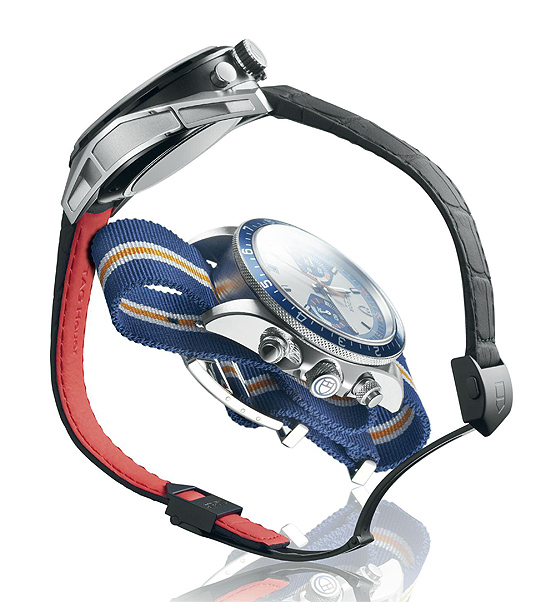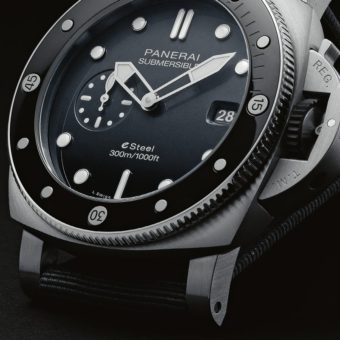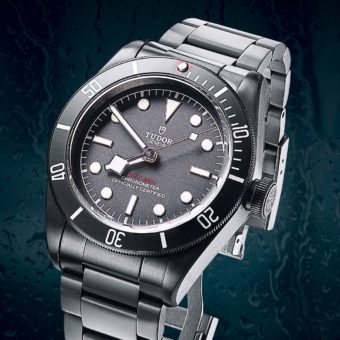One sporty chronograph, the TAG Heuer Carrera Calibre 1887 Jack Heuer Edition, meets another, the Tudor Heritage Chrono Blue, in this comparative watch test. All original photos are by WatchTime’s Nik Schölzel.
These two chronographs have their roots in the ’70s. TAG Heuer’s Carrera Calibre 1887 Jack Heuer Edition, which debuted in April 2013, uses a 1970s-inspired design in which the chronograph pushers sit at the top of the case. Tudor’s Heritage Chrono Blue is an updated version of the distinctive Montecarlo chronograph, launched in 1973. Like the Montecarlo, which was produced for only a short time, the Heritage Chrono Blue has a bi-compax design and a rotating bezel that can indicate a second time zone. We examined these sporty instrument watches to see what happens when they go head to head.

The design of the TAG Heuer watch is sometimes called a “bullhead”: the crown is at 12 o’clock and the chronograph pushers are on either side of it, suggesting (mildly) a bull’s horns. This arrangement, which has its origins in stopwatches, began to migrate to wristwatches in the 1970s. It prevents the crown from pressing uncomfortably against the back of the wearer’s wrist. Furthermore, the chronograph can be conveniently started, stopped and reset with the index finger. To keep the pushers free of obstruction, the TAG Heuer’s lugs slope down more severely at the top of the case than at the bottom. Still, the watch fits easily under a shirt cuff. We found little to detract from its wearing comfort, although the well-crafted folding clasp is a bit bulky. The closure has a locking mechanism that enables you to alter the strap length, so the 45-mm case won’t slip back and forth on your wrist.
The case is complex. The bezel is stainless steel with a glossy finished coating of titanium carbide. As the name suggests, titanium carbide is a composite of titanium and carbon. The substance has a hardness of 4,000 Vickers. For comparison’s sake: ordinary steel of the sort used for most watch cases has a hardness between 200 and 240 Vickers. The outer, uncoated stainless-steel portion of the case is elaborately milled, with different surfaces that are polished, satin-finished, or sandblasted. The movement is contained in a section of the case made of titanium coated with a matte-finished layer of titanium carbide. The case of the Tudor Heritage Chrono Blue is simpler than that of the TAG, but it does have many high-quality features. For starters, its pushers and crown are screwed, which contributes toward making the case water resistant to 150 meters – a claim that was confirmed in our test. Furthermore, the edges, chamfers, knurling, polishes and satin-finishing are very precisely crafted – perhaps too precisely, considering the sharp lower edges of the case’s middle piece. Last but not least, the time-zone bezel clicks into position without play or wiggle. It is graduated in 48 increments: this number enables you to set the bezel to time zones that differ from adjacent zones by half an hour or 15 minutes, as is the situation, for example, in Venezuela, India, Nepal, and parts of Australia.

Click here to download the full test article, including specs, scores, and prices for each watch, from the WatchTime online store for only $2.99.







Styl
Head-to-head comparisons are terrific for would-be shoppers.
Please do more.